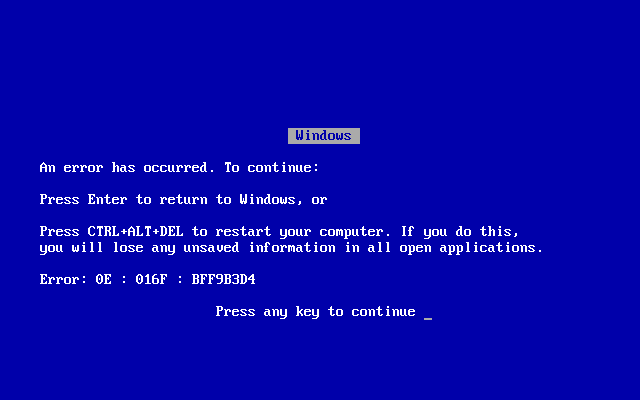The Blue screen of Death (BSoD)
How to Handle the Blue Screen of Death…

The “Blue Screen of Death” is one of the most feared Windows errors. The Blue Screen of Death is so feared and so infamous that it has earned its own acronym: BSoD.
The BSoD is exactly what its name suggests: it’s a brilliant blue error screen displayed after a major system error on a Windows computer system.
The only way recover from the Blue Screen of Death is to restart your computer by pressing the Power button for five seconds. This “hard restart” can cause you to lose whatever you were working on.
A hard restart like this can also damage your hard disk and shorten the life of your computer.
So, learning how to effectively deal with the BSoD is something every computer user should know.
What Causes the Blue Screen of Death?
While damaged hardware may cause a BSoD, there are two main reasons this dreadful error message appears, including:
Problems With Registry Keys
Registry keys are smalls software programs Windows needs to run everything else.
Registry keys can be duplicated, become corrupted, or become outdated. If versions are changed, the next time an application loads, the registry key may be different from what the application expects.
These incompatibilities increase over time as more new software is installed, and is one of the main reasons why a freshly-installed copy of Windows is more stable than an “old” one.
Device Driver Errors
Faulty or poorly written device drivers can also cause the Blue Screen of Death.
Every piece of hardware on your computer from your mouse to your keyboard depends on a special software program called a “driver” to make it work.
Sometimes automatic updates with your Windows Operating System (OS) will create conflicts with outdated drivers.
The solution? Make sure your drivers are updated, and remove old drivers that can cause the Blue Screen of Death.
There are special programs that make this process quick and easy to do.
Escaping the Blue Screen of Death
Remember, the Blue Screen of Death is not only inconvenient; it can also damage your PC.
This is because to recover from the Blue Screen of Death you must often conduct a “hard restart” of your computer.
This can damage your hard disk, reducing the lifespan of your computer.
The best thing to do is to make sure the Blue Screen of Death never happens by making sure your system registry does not contain any old or corrupted files.
It’s also important to make sure your device drivers are all up to date as explained in the below video.